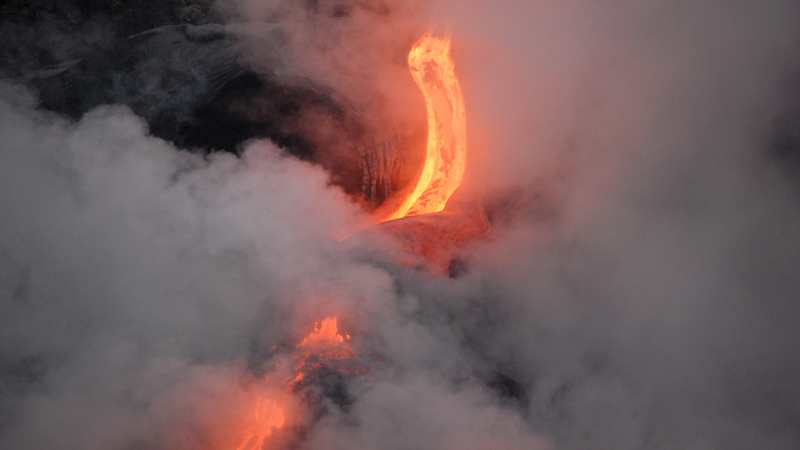(SQAUK) – In a sudden and intense event, Hawaii’s Kilauea volcano erupted with a force not witnessed since 1974, causing widespread concern throughout the Pacific region. The eruption began early Monday morning, sending lava fountains shooting into the sky and molten rivers spreading across the landscape.
Local Hazards:
The eruption presents immediate dangers to the surrounding areas, including:
- Toxic Gas Emissions: The release of sulfur dioxide and other volcanic gases can lead to acid rain and respiratory issues.
- Lava Flows: Rapid movements of lava pose a threat to roads, homes, and critical infrastructure.
- Ash Fall: Volcanic ash can harm crops, contaminate water supplies, and disrupt electrical systems.
Impact on Air Travel:
The aviation color code has been elevated to RED, indicating that significant ash emissions will likely affect air travel. Airlines are on high alert, with the potential for flight cancellations and rerouting to avoid the ash cloud, which could spread across the Pacific.
Tourist Industry at Risk:
Hawaii’s tourist industry is poised for a significant impact, as the eruption may discourage visitors and result in substantial economic losses. Hotels, tours, and other tourism-dependent businesses face an uncertain future if the situation escalates.
Forecasting Devastation:
If the eruption intensifies, we could see:
- Widespread property damage: Lava flows may destroy homes and landmarks, leading to mass displacement.
- Economic turmoil: The cost of damages and a drop in tourism could strain Hawaii’s economy.
- Environmental Impact: Fragile ecosystems could be permanently altered, with several species facing the threat of extinction.
As the world watches with anticipation, the full extent of Kilauea’s impact is yet to be determined. Scientists and emergency services are working tirelessly to monitor the situation and provide guidance to those in the affected areas. The people of Hawaii remain resilient, but the question remains: Is this just the beginning of Kilauea’s reawakening?



